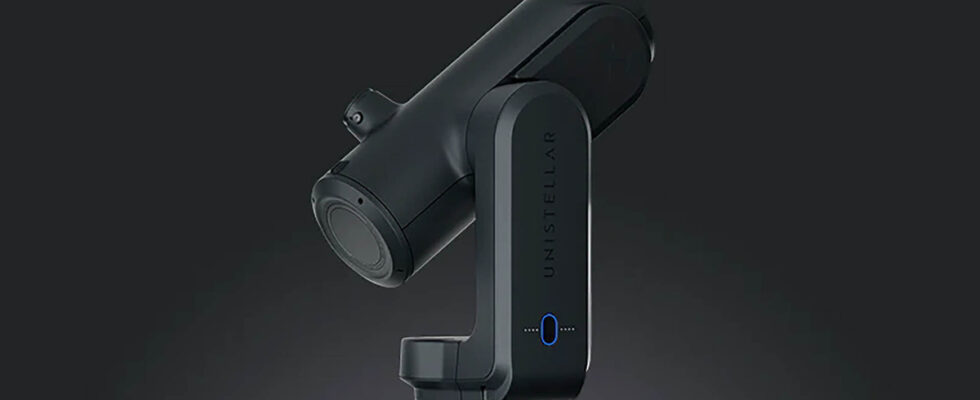Two and a half years after their first technical collaboration for the eVscope 2, Nikon and the French company Unistellar are once again joining forces for the development of a new digital telescope: the Odyssey and its Odyssey Pro version.
From the point of view of optics and pure technique, the Odyssey remains a step below the eVscope 2: its focal length is smaller (300 mm compared to 450 mm), as is the diameter of its mirror (85 mm versus 114 mm), which somewhat limits its “expert” uses.
But this still has the advantage of reducing its weight (6.5 kg with the foot compared to 9 kg!), its size and its price. At least, for the classic version, that is to say the one which is controlled and viewed only via the smartphone. Because there is a “Pro” version which benefits from a physical aiming system.
Very expensive Nikon viewfinder
The eyecup developed with help from Nikon. © Unistellar
In addition to the optics, Nikon also participated in the optical eyepiece called “Nikon Eyepiece Technology”, which is only integrated into the Pro version of the Odyssey. Inherited from the EVScope 2, this viewfinder allows you to use this telescope in classic mode, that is to say with the eye glued to the barrel, in addition to use via the smartphone application. This has the virtue of offering greater immersion, with a more physical relationship with the object and greater concentration on the observation area.
But this comes at a cost… rather high: while the technical sheets of the Odyssey and Odyssey Pro are identical, the addition of this eyecup on the Pro version represents the bulk of the additional €1,500 difference. Which brings the device to €3,999, a price that flirts dangerously with the €4,499 of the eVscope 2. And which even matches it when you choose it… in red color. You can be an amateur astronomer and still be attached to style!
No adjustments to be made
One of the strengths of these products for the general public is their automation. In addition to the Unistellar application, which allows you to automatically point the machine at areas of interest observable in your region – yes, it even works in dense urban environments – it should be noted that the work around the optics is of a high level. No focusing needs to be done either on the eyecup or the optics, the system takes care of everything. And the integrated motor avoids the tedious movement of the bezel by hand.
On the signal processing side, Unistellar has made a name for itself in the field for its management of digital sensor noise. Thanks to numerous in-house algorithms, the company not only knows how to attenuate light pollution (better blacks), amplify the signal without (too much) noise, and above all intelligently combine images. This makes it possible to reveal nebulae, something impossible during direct observation with conventional telescopes (it is then necessary to add a camera or a controllable sensor, in addition to a computer).
No need for complex software either to combine and save the images (4.1 Mpx), the work being carried out in the device and direct recording being possible with the 64 GB of integrated memory.
It is this amount of know-how, automation and the small size of the astronomy market which largely explains the fairly high entry price of the device.
The Unistellar Odyssey is priced at €2,499.
The Odyssey Pro (with the Nikon optical eyecup) is €3,999
The red Odyssey Pro (still equipped with the eyecup) costs €4,499.
All with immediate availability.
